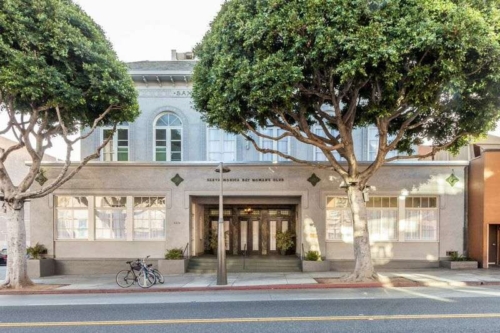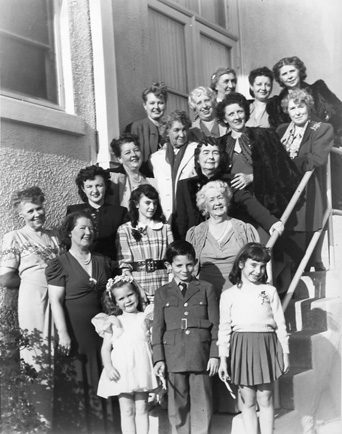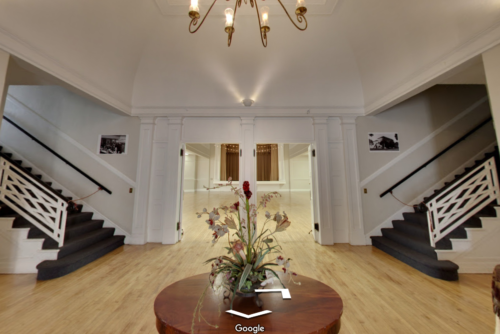Santa Monica Bay Woman’s Club Building

- Known As
- Classical Revival
- Architect
- Henry C. Hollwedel
- Built
- 1914
- Designated
- April 8, 1991
In 1904, suffragist and community activist Elmira T. Stephens formed a local women’s study group called “The History Class” to discuss current affairs with the mission of “advancement in all lines of culture, education, welfare, service and civic affairs.” The following year, the group organized formally and founded the Santa Monica Woman’s Club with members such as Hannah Cornelia, the wife of city founder Senator John P. Jones. The club enlarged its membership a few years later when it joined forces with an Ocean Park women’s organization to form the Santa Monica Bay Woman’s Club.
The Club raised resources to purchase land on Fourth Street for $2,600 and build a clubhouse, with funds provided in part by powerful Californio landowner and benefactor Arcadia Bandini de Stearns Baker, who helped develop Santa Monica and West Los Angeles, and also donated her land to create Palisades Park.
Architect Henry C. Hollwedel designed the Santa Monica Bay Woman’s Club building, which was built in 1914. Hollwedel also designed Henshey’s Department Store (now REI on 4th Street) and the Mayfair Theatre (now a condominium complex with the theater’s facade intact).
Largely unchanged since it was built, the two-story stuccoed building is notable for its tiled, hipped roof decorated with an inscribed frieze. Six arched casement windows topped with fans in the arches are spaced at regular intervals across the upper-story façade which is set back.
On the ground floor, an inset entranceway leads to three sets of handsome oak doors topped with period stained-glass panels. Marble is used around the doorways. These elements lend an air of solid respectability to the building. In its overall symmetry and orderliness—essential qualities in the Classical Revival style—the building was a fitting home for a group focused on fostering social ties and creating community.
With this building as headquarters, the Santa Monica Bay Woman’s Club pursued many social and cultural causes. The group offered Red Cross classes during World War I, served meals during the Depression, assisted women in poverty, sponsored cultural field trips for schoolchildren, awarded scholarships to students and donated funds to aid Native Americans and veterans. Club members also organized social activities for their own enjoyment.
On August 18, 1920, the 19th Amendment was ratified, granting American women the right to vote. However, it should be noted that while the amendment passed, African American, Native American and other minority groups were blocked from voting until the Voting Rights Act passed in 1965.
The building was designated a landmark in 1991 and remains a tangible reminder of the active role that women played in building and serving Santa Monica. More recently, the Santa Monica Bay Woman’s Club has raised money for many organizations, including 826LA literacy project, Doctors without Borders, National Rescue Dogs and Pennies for Pines, which reforests national parkland.
To take a free virtual tour of the Santa Monica Bay Woman’s Club, click here.
Sources:
- Glancey, Jonathan. The Story of Architecture. New York: Dorling Kindersley, 2000.
- “Landmarks Tour of the City of Santa Monica.” Santa Monica: City Planning Division, 2004.
- Santa Monica Historic Resources Inventory, 1985-1986. Vol. 1. City of Santa Monica, Building and Safety Department.
- Santa Monica Outlook, Feb. 17, 1955, Nov. 22, 1961, and May 17, 1975.
- “Staff Report on 212-216 Santa Monica Boulevard, Mayfair Theatre.” City Planning Division, Santa Monica.
- Warren, Charles S. and ed. Santa Monica Blue Book. Santa Monica: Arthur H. Cawston, 1941.

